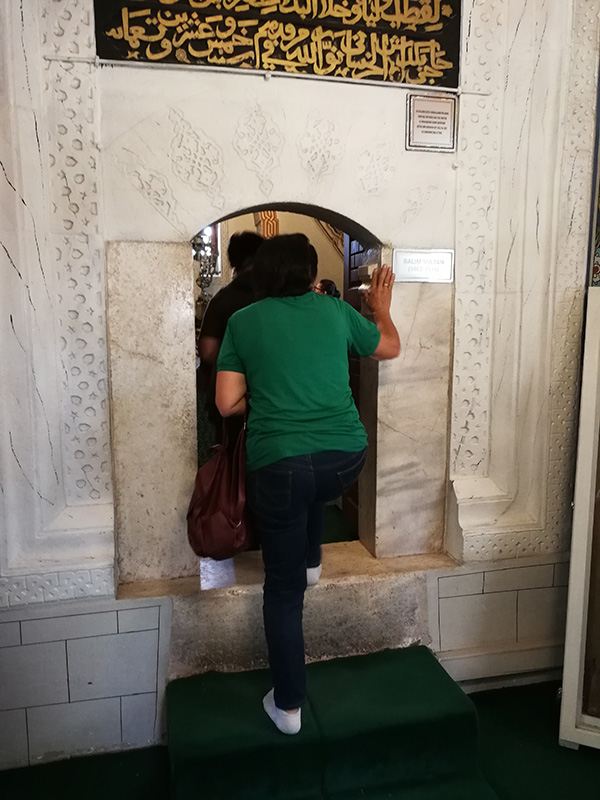Anatolian Alevis between the Past and Today: The Legacy of Hacı Bektaş Veli among Urban Alevis in Izmir
Seminar with Helen Haas, PhD fellow at the University of Tartu.
Discussant: Hege Markusen, Lund University
Join online
You can also join the seminar online: please sign up to raudvere@hum.ku.dk.
Abstract
My thesis is about a religious minority group known as Turkish Alevis characterized by common religious practices and a belief system distinct from the Sunni and Shia Muslims. The general focus of this study is Alevis and their expressions of belief concerning Hacı Bektaş-ı Veli, a 13th Century Anatolian saint, not Alevism as an abstraction (Primiano).
 It is a case study about the Alevi community in Buca (Izmir), their imaginations, beliefs, and practices regarding the 13th Century saint Hacı Bektaş-ı Veli. The aim of this research is to study the legacy of Hacı Bektaş-ı Veli from the vernacular religious point of view, the meaning and importance that is assigned to him as the saint of the saints by the Alevis living Buca. There are three main aspects for researching the importance and meaning of the saint – the visual representation of the saint (the lion and gazelle visual), oral/written sources (Velâyetnâme and his sayings), and visitation to the tomb of the saint in Hacıbektaş. These three aspects of the cult of Hacı Bektaş-ı Veli were chosen as the most important tools detected during the fieldwork for communicating and empowering the cult of the saint.
It is a case study about the Alevi community in Buca (Izmir), their imaginations, beliefs, and practices regarding the 13th Century saint Hacı Bektaş-ı Veli. The aim of this research is to study the legacy of Hacı Bektaş-ı Veli from the vernacular religious point of view, the meaning and importance that is assigned to him as the saint of the saints by the Alevis living Buca. There are three main aspects for researching the importance and meaning of the saint – the visual representation of the saint (the lion and gazelle visual), oral/written sources (Velâyetnâme and his sayings), and visitation to the tomb of the saint in Hacıbektaş. These three aspects of the cult of Hacı Bektaş-ı Veli were chosen as the most important tools detected during the fieldwork for communicating and empowering the cult of the saint.
The thesis is based on the fieldwork in Hacıbektaş (2018) and Buca (2019) and consists of an introduction, four chapters that are dedicated to the Alevi community of the Buca cemevi, Buca cemevi, imaginations and beliefs about Hacı Bektaş-ı Veli, visitation to Hacıbektaş, and conclusion. The research methods include participant observation, planned semi-structured interviews, and random interviews.
As Hacı Bektaş-ı Veli is seen as the most important saintly figure (serçesme), in some of the cases associated with Ali and God, his example and teachings are regarded as an ideal to be followed by every Alevi. On the one hand, he is seen as „the Alevi saint“, whose name´s and tomb´s miraculous power is understandable and accessible to those „who believe and submit“, on the other hand, he is also seen as a universal teacher and spiritual leader, whose teachings would benefit all people and make the world a better place if „only respected“. Imaginations and beliefs concerning the saint are an integral part of being an Alevi as this privileged knowledge has been transmitted through the previous generations as the legacy of the forefathers.
 Helen Haas
Helen Haas
PhD fellow at the University of Tartu
Map of South Campus
View directions.
View on map of the Faculty of Humanities - South Campus.
View map of South Campus (pdf).
